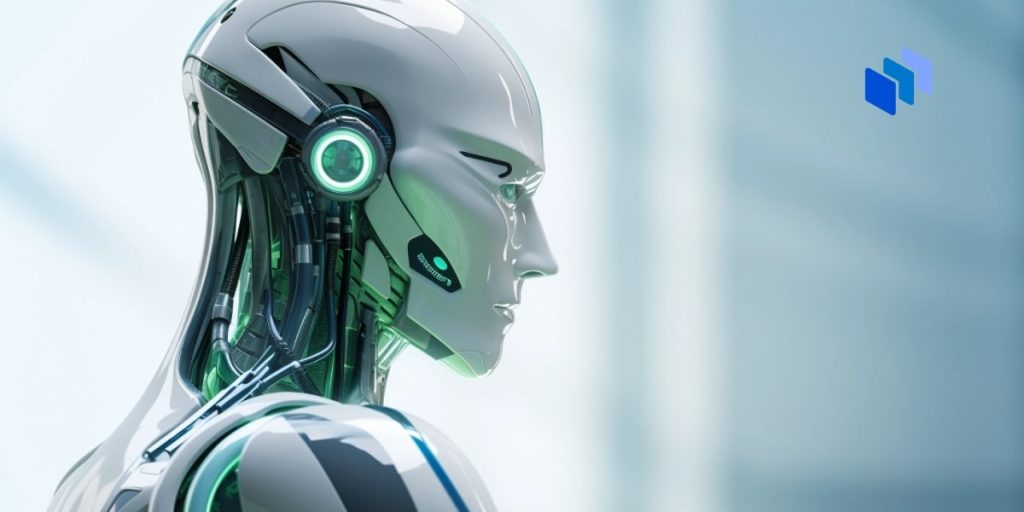Few technologies have attracted as much attention as generative AI. In 2023, the large language model (LLM) market has been one of the most closely followed sectors in the world.
Since the release of ChatGPT in November 2022, more and more organizations have been looking to experiment with generative AI to see how conversational chatbots can enhance their workflows.
So far, OpenAI has reported that ChatGPT has been adopted by teams in over 80% of Fortune 500 companies. Likewise, a McKinsey survey found that almost a quarter of C-suite executives are using generative AI tools for work.
With 2024 fast approaching, here are 6 generative AI startups to keep an eye on in 2024.
6 Generative AI Startups to Watch in 2024
1. OpenAI
OpenAI, founded in 2015 by a group of technologists, including Sam Altman and Elon Musk, is the widely recognized leader of the LLM market. Currently, experts estimate that the company is worth anywhere between $29 billion to $90 billion.
The AI startup has developed leading products in the space, including the AI chatbot ChatGPT, the multimodal GPT-4V LLM, and the text-to-image tool DALL-E 3.
In the future, it remains to be seen when the organization will drop the highly-anticipated multimodal Gobi LLM and GPT-5. It’s also worth noting that if OpenAI does commit to developing its own AI chips, as it’s reportedly in the process of investigating, then it could entrench its place in the market going forward.
Products to watch: ChatGPT, GPT-3.5, GPT-4, ChatGPT Enterprise, DALL-E 2, DALL-E 3.
2. Hugging Face
Since it was founded in 2016, Hugging Face has quickly established itself as one of the most significant AI startups in the world and achieved a valuation of $4.5 billion. The Hugging Face platform provides developers with a library of pre-trained machine learning (ML) models, libraries, and resources they can use to build AI-driven applications.
Hugging Face has played an important role in enhancing the open-source community, providing a centralized location for AI researchers to collaborate on models and projects.
The organization is known for developing and maintaining a leaderboard that ranks the best open-source LLMs from Llama to Falcon 180B. This leaderboard helps developers find LLMs with optimal performance for their specific requirements.
In 2024, Hugging Face will undoubtedly remain at the heart of the community around open-source AI development. So if you want to keep on top of the latest pre-trained models, this site is the way to go.
It’s worth noting that Hugging Face also provides paid ML solutions to support enterprise users. These solutions include Enterprise Hub, which enables users to deploy ML models on their own infrastructure, and Inference Endpoints, a tool for deploying models on a dedicated managed endpoint.
Products to watch: Enterprise Hub, Inference Endpoints.
3. Anthropic
At the heart of the text chatbot revolution sits Anthropic, an AI startup founded in 2021 by ex-OpenAI employees. It has made waves not just due to its verbose Claude and Claude 2 virtual assistants but also because of its emphasis on safe development.
For instance, the organization’s latest release, Claude 2, enables users to converse with the tool in natural language and has been fine-tuned to produce less harmful outputs than other competing tools like ChatGPT.
At the same time, Claude 2 has a much larger context window than OpenAI’s GPT-4, of 100,000 tokens compared to 32,768 tokens. This means that Claude 2 can process and respond to larger text inputs.
In 2024, Anthropic has the potential for a big year. This is due to Amazon’s recent $4 billion investment in the organization and their work on releasing a frontier model called Claude-Next, which is purportedly 10 times more powerful than existing AI systems.
Products to watch: Claude, Claude 2, Claude-Next.
4. Stability AI
Stability AI is another key startup in the generative AI market. Founded in 2020, the organization has quickly achieved a valuation of $1 billion. A large part of that success has been due to the startup’s latent diffusion model, Stable Diffusion, a text-to-image tool that can create highly detailed images on demand.
However, Stability AI is also creating a number of other models across different modalities. One of these tools is Stable AI, a text-to-audio solution that enables users to enter written prompts and generates audio in 44.1 kHz stereo.
The vendor additionally provides a natural language generation LLM known as Stable Beluga. This chatbot is fine-tuned and optimized for harmlessness, featuring a high degree of reasoning ability, making it suitable for answering general or scientific questions and completing tasks like copywriting.
As multimodality becomes a bigger focus for leading AI vendors like OpenAI and Google, Stability AI will be a key vendor to focus on account of its efforts to supply the open-source community with LLMs for text, audio, and image generation.
Multimodality is gaining increasing prominence among leading AI vendors such as OpenAI and Google. Stability AI, given its commitment to providing the open-source community with LLMs for text, audio, and image generation, will be a key vendor to focus on.
Products to watch: Stable Diffusion XL, Stable AI, Stable Beluga.
5. Midjourney
Midjourney is one of the fastest-growing startups in the generative AI market, founded in 2021 and already having generated $200 million in revenue with $0 external investment.
One of the key ingredients to the company’s success so far is its flagship proprietary machine learning model (also called Midjourney), which was initially released in July 2022. It can be accessed via the Discord chat app and uses a generative diffusion model to convert natural language prompts into images.
The vendor’s latest update, MidJourney V5.2, released in June 2023, is designed to better understand user prompts and create more detailed and richly coloured images than the previous version. One of the key differentiators between MidJourney and competitors like DALL-E 3 is that it excels in creating high-resolution and high-quality images.
As one of the most advanced AI-driven text-to-image vendors on the market, the startup is worth watching in 2024 to see if it will be able to outperform other industry competitors.
Products to watch: Midjourney
6. AI21 Labs
When it comes to making AI more accessible, AI21 Labs, an AI startup based in Tel Aviv, has been at the forefront, recently raising $155 million in funding and achieving a $1.4 billion valuation.
AI21 Lab’s flagship product is AI21 Studio, a platform that offers access to specialized machine-learning models like Jurassic-2. Developers can utilize these models to create AI-driven business applications capable of performing natural language tasks, text summarization, and paraphrasing.
One of the key differentiators that makes AI21 worth watching in 2024 is that it provides organizations with access to pre-trained LLMs, which they can use and fine-tune for custom enterprise use cases.
Products to watch: AI21 Studio.
The Bottom Line
While many commentators are anxious that the hype around generative AI will fall, recent releases from providers like OpenAI, Meta, and Google suggest that the development of the technology itself isn’t going to slow down for the foreseeable future.
As we move into 2024, OpenAI, HuggingFace, Anthropic, Stability AI, Midjourney, and AI21 Labs will all be paving the way toward driving the open-source ecosystem forward.










